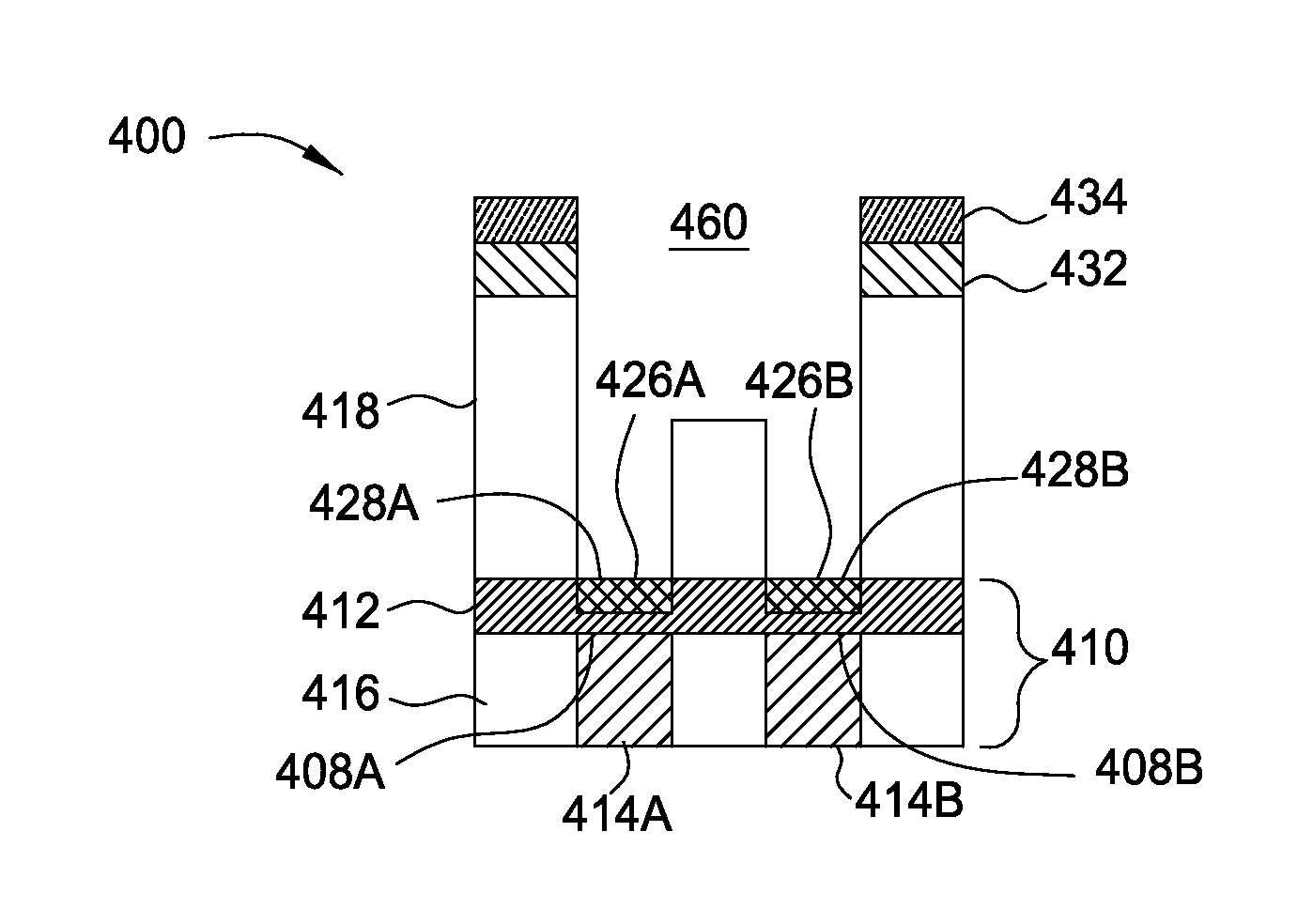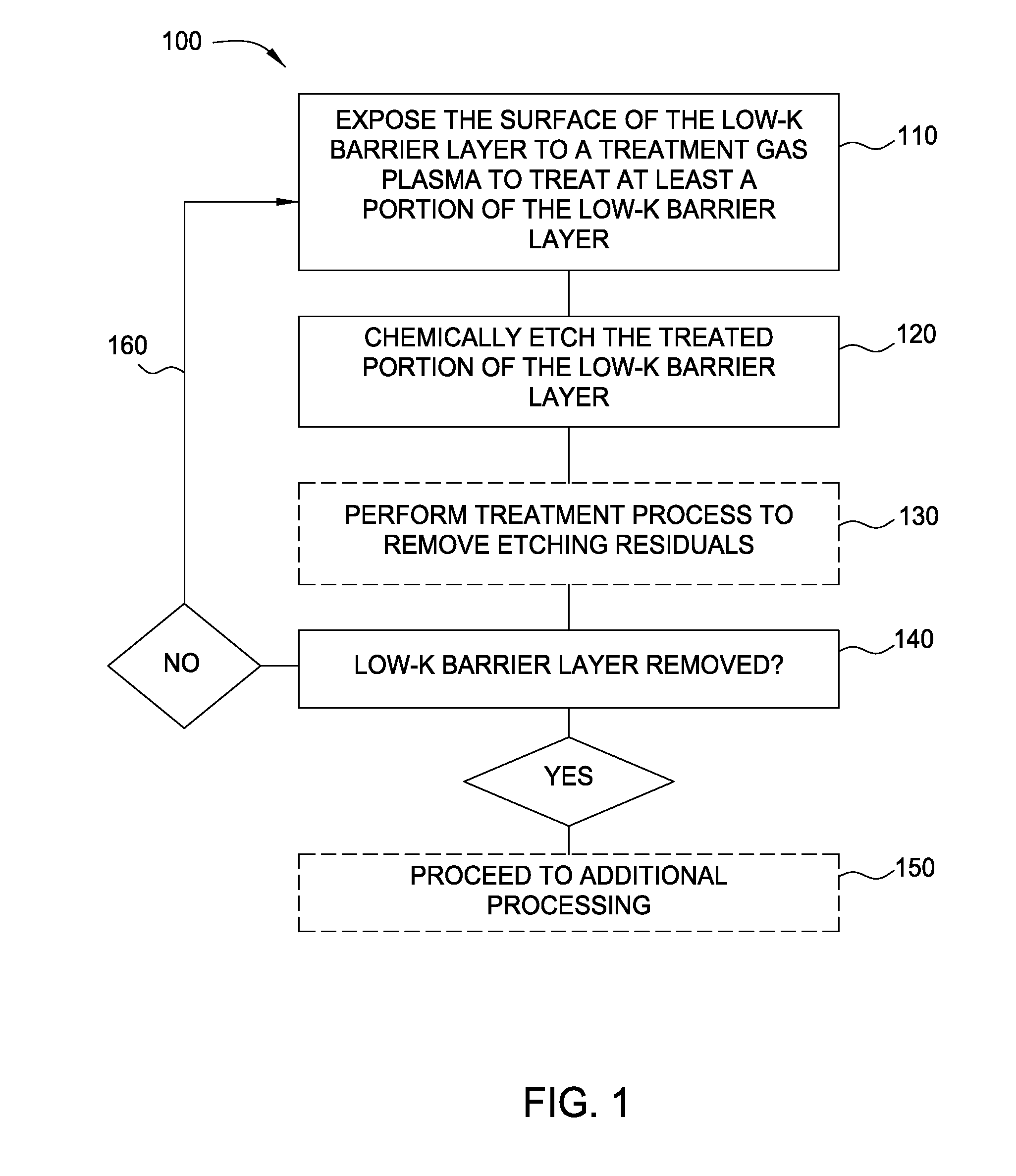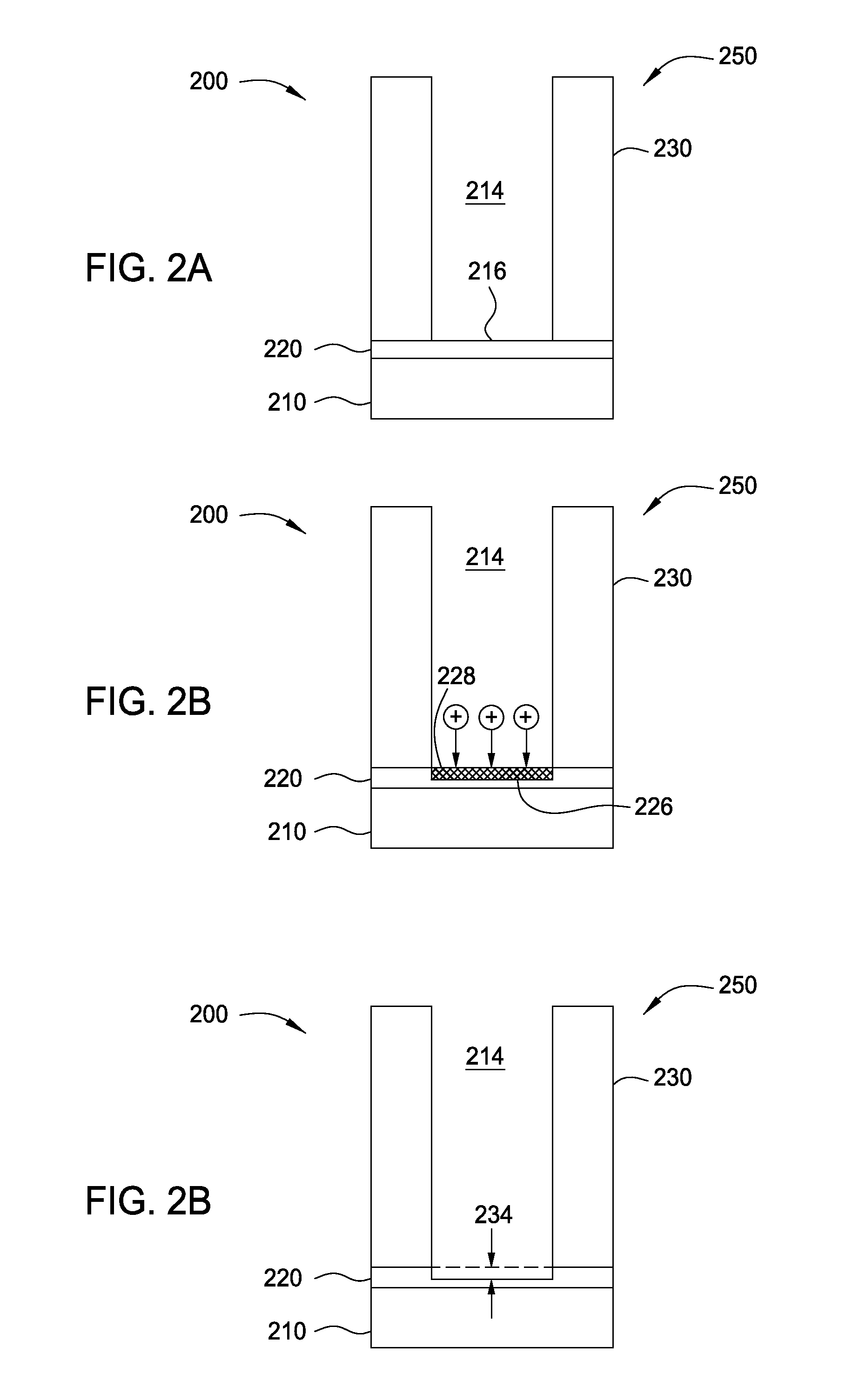Methods for barrier layer removal
a barrier layer and low-k dielectric technology, applied in the field of semiconductor manufacturing, can solve the problems of affecting the performance and affecting the operation of the etch process
- Summary
- Abstract
- Description
- Claims
- Application Information
AI Technical Summary
Benefits of technology
Problems solved by technology
Method used
Image
Examples
Embodiment Construction
[0019]Implementations described herein generally relate to semiconductor manufacturing and more particularly to methods for etching a low-k dielectric barrier layer disposed on a substrate using a non-carbon based process. In some implementations, a new process for dual damascene formation is provided. As process dimensions continue to shrink, new schemes of etch / clean / wiring processes are needed. In conventionally known dual damascene processes, the low-k dielectric barrier layer is opened using carbon fluoride containing chemistries, followed by a wet chemical etch process to remove polymer residual formed by the carbon fluoride chemistries. The wet chemical etch process sometimes damages underlying metal films and forms etching defects that degrade the structure. However, the gap fill process is becoming more difficult due to device scaling. Thus, a new process scheme is introduced to reduce height ratios. In the dual damascene etching processes described herein, the via stops on...
PUM
| Property | Measurement | Unit |
|---|---|---|
| temperature | aaaaa | aaaaa |
| diameter | aaaaa | aaaaa |
| diameter | aaaaa | aaaaa |
Abstract
Description
Claims
Application Information
 Login to View More
Login to View More - R&D
- Intellectual Property
- Life Sciences
- Materials
- Tech Scout
- Unparalleled Data Quality
- Higher Quality Content
- 60% Fewer Hallucinations
Browse by: Latest US Patents, China's latest patents, Technical Efficacy Thesaurus, Application Domain, Technology Topic, Popular Technical Reports.
© 2025 PatSnap. All rights reserved.Legal|Privacy policy|Modern Slavery Act Transparency Statement|Sitemap|About US| Contact US: help@patsnap.com



